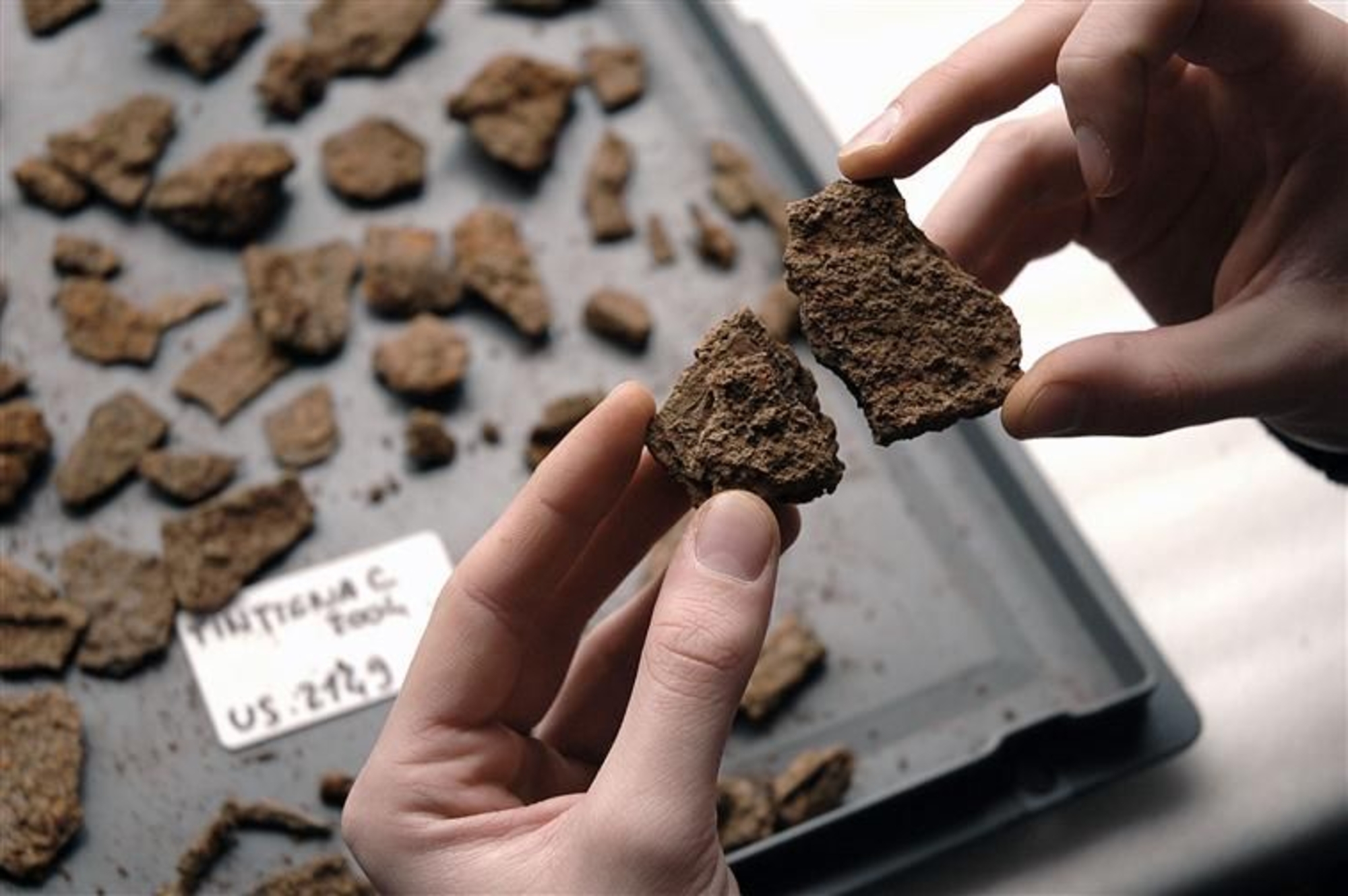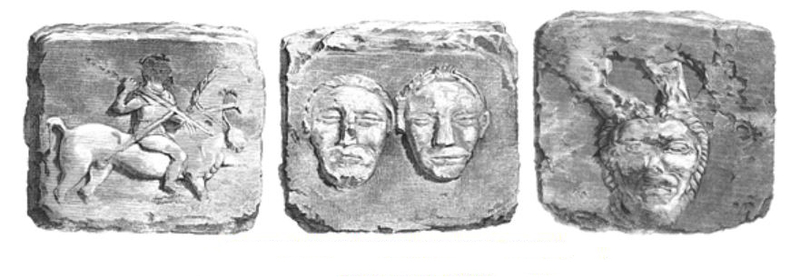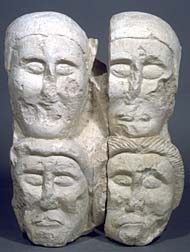- Home
- Research and interpretations
- History of excavation
Gallic bas-reliefs from Entremont, engravings by Marius Reynard in 1851, published in the work by Rouard.
During the 19th century
When Prosper Mérimée, general inspector of historic monuments in France, wrote in 1835, "we showed the museum a few crudely sculpted stones… All of these sculptures are extremely barbaric in character. We think they can be attributed to the Salyens, and indeed I do not see who else could have done so poorly” (Notes d’un voyage dans le midi de la France), the site of Entremont had already incited a great deal of controversy among the erudites of Provence.
In 1817, some young ecclesiastic teachers from the Petit Séminaire of Aix found three blocks that were decorated with bas-relief sculptures and reused in a ruined bastion on the high plateau of Entremont. It is indeed this discovery that aroused debate concerning the original city of Aix-en-Provence. Historians starting in the 16th century had argued for a location inland from Aix, and for some, situated on the plateau.
The writings of ancient authors on the Salyens people indeed provoked this desire for identification. Mérimée expressed his doubts, “very near Aix, on the Entremont plateau, some say there was a Salyen city, destroyed by Sextius Calvinus. (…) It seems incredible that the Salyens, neighbors of Marseille, where the arts of Greece penetrated at an early hour, who were a powerful people since they menaced this same city, had only the savage retrenchment of the Entremont plateau.”
Fortification walls, numerous stones, abundant pottery, and fragments of millstones… these were all elements that ignited a desire to excavate and research. In 1877, Alfred d’Aubergue followed this inspiration and extracted four joined heads with closed eyes from the earth. His sister later bequeathed them to the museum in 1903, where they rejoined the first discoveries. Later, Alfred Jourdan, President of the Bar and member of the Académie d’Aix, bought some land on the plateau so that he could one day conduct excavations there.
The site of Entremont thus became famous for its astonishing statuary, which would stimulate comparisons with other cultures of decapitators.
Group of decapitated heads excavated at Entremont on January 25, 1877 under the initiative of A. d’Aubergue. Photo : Centre Camille Jullian


